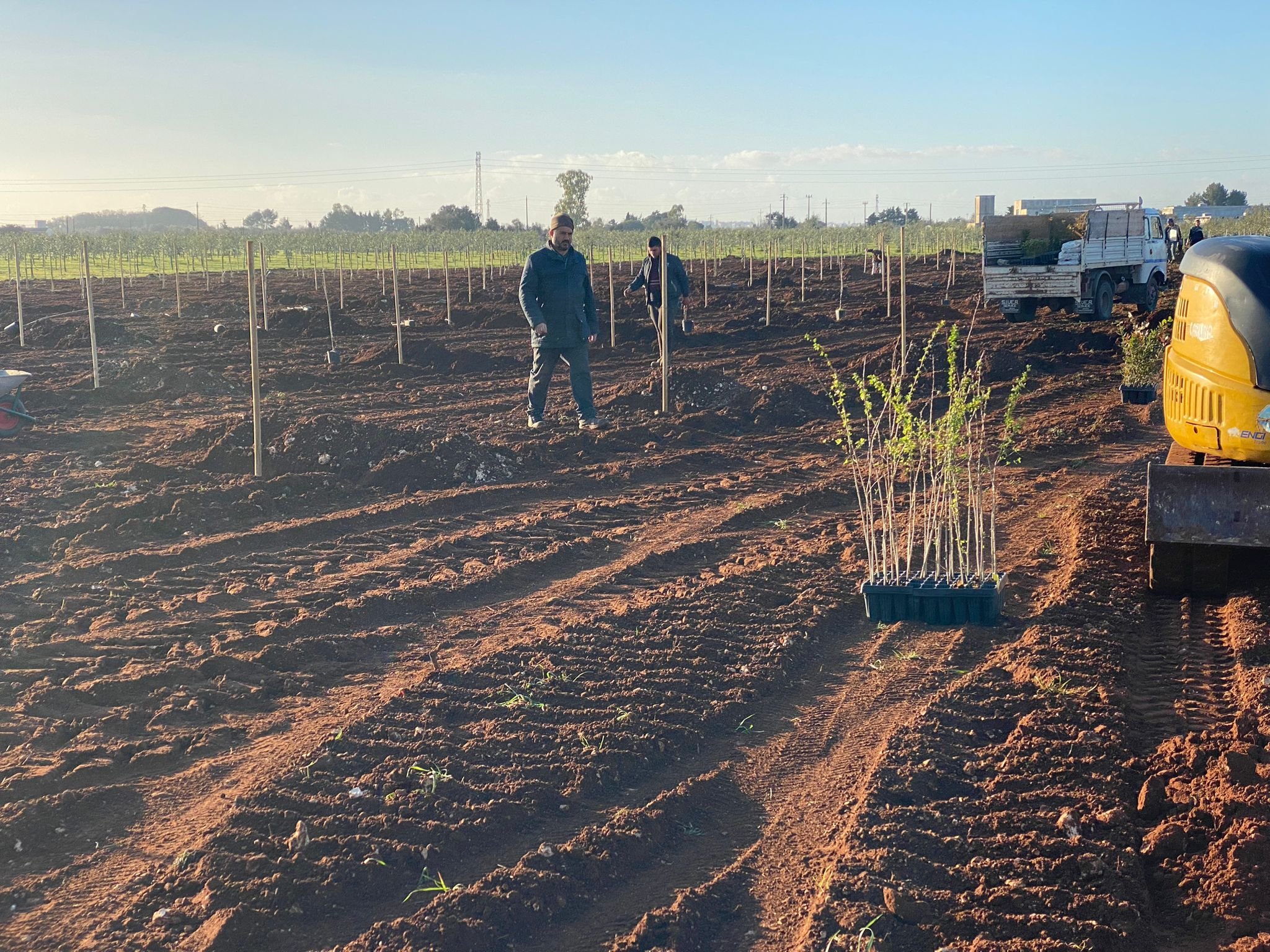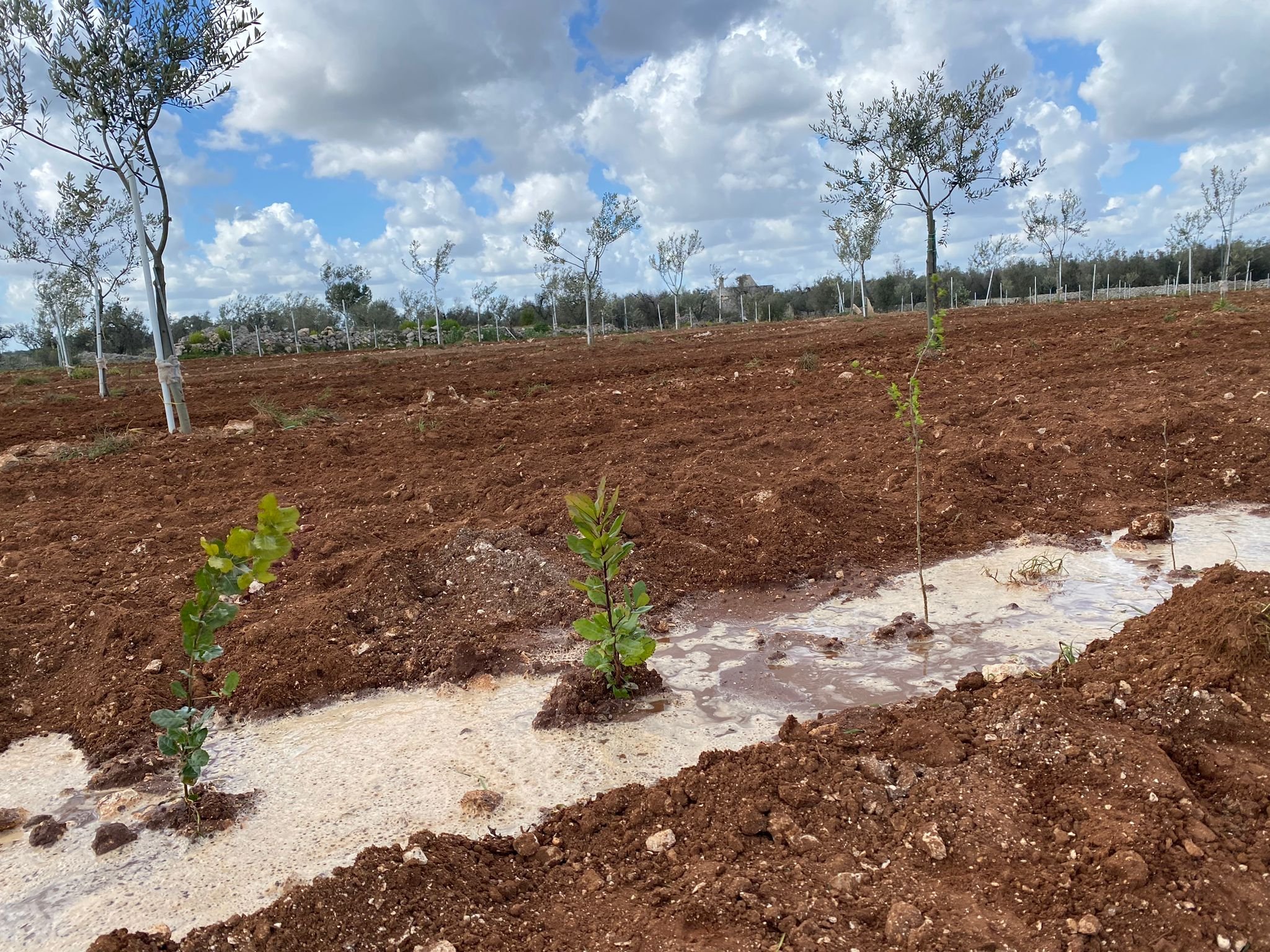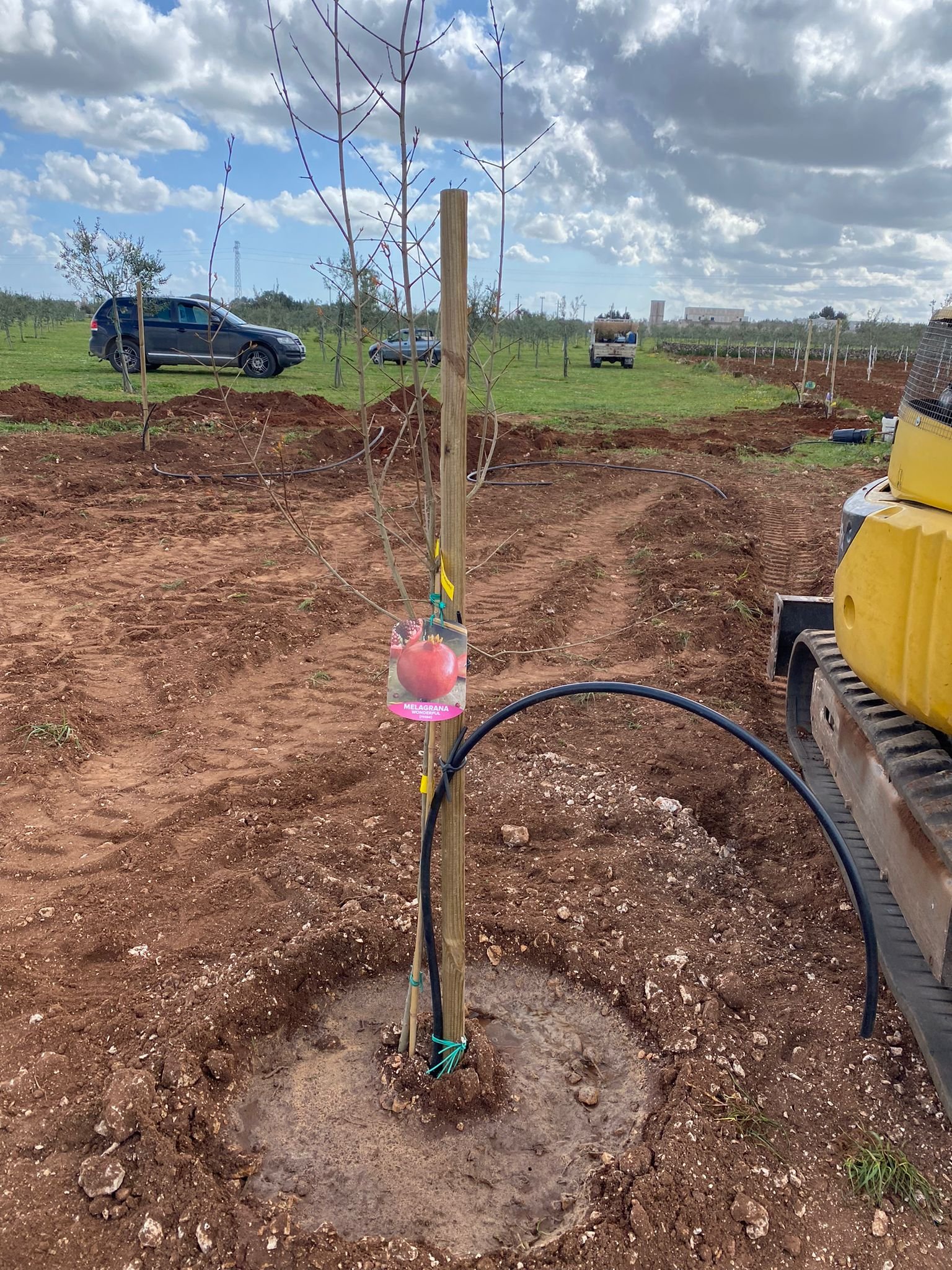Puglia - Italy
Olive grove and biodiversity restoration in Puglia after the Xylella Fastidiosa bacteria eradicted centennial heirloom olive trees.
BEFORE
AFTER
Context
Puglia has historically been covered with pluricentennial olive trees over thousands of hectares, with its entire community and economy bound to them.
In the province of Lecce, over the past 10 years, hundreds of hectares of monoculture olive groves were attacked by a lethal bacteria called Xylella Fastidiosa. Most of the local olive trees died, except from the Tuscan variety Leccino that had sometimes been planted.
The monoculture contributed to making the ecosystem more fragile: with a lack of different species of olive trees, a lack of other biodiversity and hotter summers , the trees became more fragile and prone to pest attacks. The froghopper insect (Philaenus spumarius) that travels quite quickly through the grasses has also played a key role in the rapid expansion of the bacteria.
What the owner needed help with
In order to replant fit-for-future olive groves, we needed to move away from the parcels of monoculture of olive grove that had been planted for the past centuries and needed to bring back biodiversity with hedges and some tree islands and plant extensively with trees sufficiently far apart to be stronger and more resilient.
We also had to identify a way to finance an extensive plantation which is harder to justify with today’s economic market laws, pushing all olive growers towards intensive plantation.
What we did
Parcel by parcel, we removed dead trees and their stumps, and prepared the land for replanting.
In the winters of 20-21 and 21-22, we replanted olive trees in the centre of the parcels, with a distance of 5 to 6 metres between them, of two Xylella-resistant varieties. This distancing is the one used for extensive olive groves, in order to not exhaust the land’s and water resources but to have good harvest.
All trees were set up with a dripping watering system connected to wells in each parcel, to ensure their survival and production of olives.
We then started planting hedges in between parcels and on the perimeter with a variety of biodiverse Mediterranean trees or bushes that are not hosts of Xylella. We made sure to have continuous cover with wild herbs and some cover crops to prevent erosion.
All these olive groves are organic certified.
When did the project take place
It started in 2020-2021 with the regional push to replace the olive groves.
It is scheduled to be completed by winter 2024/2025.
Size of the project
92ha in 18 parcels.
Objective of more than 1,500 trees per ha, including biodiversity.



































